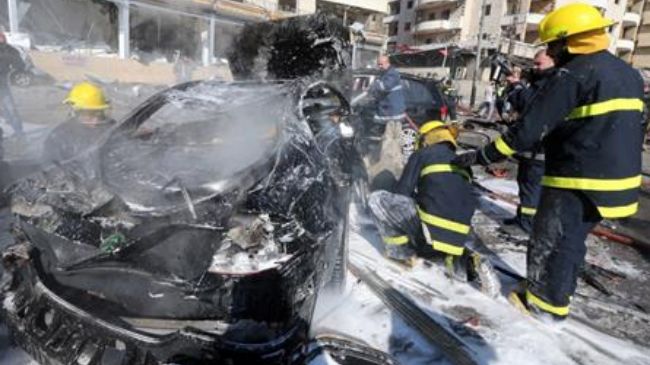Embittered Israel to blame for Beirut bombings: Iran

Iran’s Foreign Ministry has strongly condemned the deadly bomb attacks near the Iranian Cultural Chancellery in Beirut, laying the blame on the Israeli regime.
“There is no doubt that the perpetrators of the terrorist incident in Beirut are enemies of the stability, security and unity of Lebanon and are agents of the Zionist regime [of Israel],” Foreign Ministry Spokeswoman Marzieh Afkham said on Wednesday.
She said that those behind the Wednesday twin bombings are “embittered” because of the recent formation of a unity government in Lebanon.
At least five people were reported killed and several others injured in two bomb attacks in the south of the Lebanese capital.
The attacks happened in the southern Bir Hassan neighborhood near the Iranian Cultural Chancellery and the Kuwaiti Embassy.
The al-Qaeda-linked Abdullah Azzam Brigades has claimed responsibility for the bombings saying they will continue their attacks against Iran and Hezbollah.
The Lebanese capital has been repeatedly hit by similar terrorist attacks in recent months. A large number of people have lost their lives in the bombings.
More than two dozen people, including Iran’s cultural attaché in Beirut, were killed and at least 150 others were injured in November 2013 after two explosions struck near the Iranian Embassy in southern Beirut.
Following the incident, the Abdullah Azzam Brigades claimed responsibility for the bombings.
The group’s Saudi leader Majid al-Majid was arrested in early January and died days later from poor health in a Lebanese jail. Majid was a high-profile terrorist also wanted by the US and some other countries.







